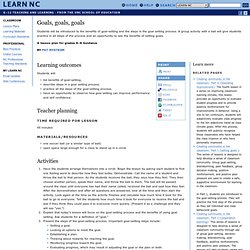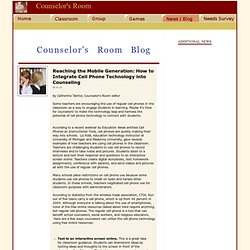

Gsgs_finalbook_022608. Bullying. Arthur . Parents & Teachers . Good Manners. Cross-Age Buddies Activities Book, 2nd Ed. Teachers Resource Room. EmotionsColorWheel-withwords. EmotionsColorWheel-reverse. EmotionsColorWheel. Do2Learn: Educational Resources for Special Needs. The Emotion Color Wheel can help visually group feelings. The circle is divided into colors to show some basic emotions. Within each basic emotion there are levels of that emotion which range from less intense on the outside to more intense in the center.
For example, levels of angry are shown as: Visually, it might help to think of basic emotions as levels of color that become more intense as they pull inward towards the circle center. Brighter, bolder colors are associated with more intense emotions. Do2Learn: Educational Resources for Special Needs. Sample SEL Activities. Handbook%20of%20Child%20Psych. Emotional Training Helps Kids Fight Depression. Counselor Group TTS School. Counselor Career Elementary School TTS. Counselor Personal Elementary School TTS. LP_23_SUPERHEROES.DOC. Goals, goals, goals. Learning outcomes Students will: list benefits of goal-setting. describe steps in a goal setting process. practice all the steps of the goal-setting process. have an opportunity to observe how goal setting can improve performance and self confidence.

Teacher planning Time required for lesson 45 minutes Materials/resources one soccer ball (or a similar type of ball) open space large enough for a class to stand up in a circle Activities Have the students arrange themselves into a circle. Assessment Ask students to describe how the goal setting could help them improve their grades. Ask the classroom teacher who witnessed the lesson to incorporate concepts from the lesson into other quizzes with extra credit for correct answers.
Supplemental information It doesn’t matter about the length of time the group achieves or the excellence of the plans they develop to reach their goals. LP_18_GOALS_GOALS_GOALS.DOC. LP_33_CHARACTERCARDS_F0912.DOC. TG_3_OUT_OF_F1001.DOC. GP_6_BUILDINGFRIENDSHIPS_F0912.DOC. TG_8_FEAR_IN_A_HAT_F0910.DOC. Motivation. Identifying strengths, interests, abilities, hopes and dreams Interactive Ideas and Reproducible Activities for Facilitators Working with Adults and Teens Motivation means incentive, inspiration, enthusiasm; it is the driving force behind behavior.

People need motivation to face difficulties in their lives, make significant behavioral change, and reach their maximum potential. Motivation is achieved by identifying ones strengths, interests, abilities, hopes and dreams. The activities in this book will help participants identify and tap into both inner strengths and external resources in order to reach their full potential. If you are working with teens or adults in a therapeutic or supportive role, either in groups or one-on-one, and they need motivation to help them on their journey to a healthier life, this book is for you. Part I has 22 sections, for all adult and teen participants who would benefit from motivation exercises. Motivation Card Deck. Rainbow Dragon Game - Kids Feelings Self-Esteem Emotions Children. GP_20_ATTITUDE_F1001.DOC. GP_21_BICYCLE_F0911.DOC.
LP_8_FLYING_STRESS_BALLOONS_F0912.DOC. Counselor News TTS School 14. Reaching the Mobile Generation: How to Integrate Cell Phone Technology into Counseling by Catherine Taintor, Counselor‘s Room editor Some teachers are encouraging the use of regular cell phones in the classroom as a way to engage students in learning.

Maybe it’s time for counselors’ to make the technology leap and harness the potential of cell phone technology to connect with students. According to a recent webinar by Education Week entitled Cell Phones as Instructional Tools, cell phones are quietly making their way into schools. Liz Kolb, education technology instructor at University of Michigan and Madonna University, gave several examples of how teachers are using cell phones in the classroom. Many schools place restrictions on cell phone use because some students use cell phones to cheat on tests and harass other students. According to statistics from the wireless trade association, CTIA, four out of five teens carry a cell phone, which is up from 40 percent in 2004. Counselor School TTS. All-GrK-5. School Counseling.